
The Fairy Tales Architecture Competition concluded another successful edition Monday evening with the anticipated reveal of its 2017 winners. The competition had its biggest winners announcement yet in front of a live audience at the National Building Museum in Washington D.C.
Like every year, the submissions blur the line between fictional and non-fictional. Narratives are depicted as storybook-friendly illustrations, but refer to themes like real-life current events or evergreen topics like the creative process, mundane everyday activities, and relatable human emotions.
The esteemed jury — which included Marion Weiss, Jing Liu, Stefano Boeri, Michael Maltzan, National Building Museum Executive Director Chase W. Rynd, and Archinect's very own Alexander Walter, among others — selected three prize winners, an American Institute of Architecture Students winner, and 10 honorable mentions.
1ST PRIZE: “Last Day” by Mykhailo Ponomarenko | Ukraine

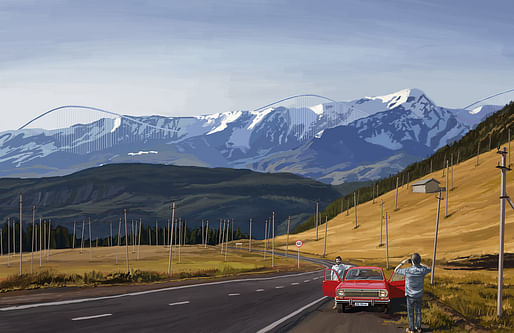
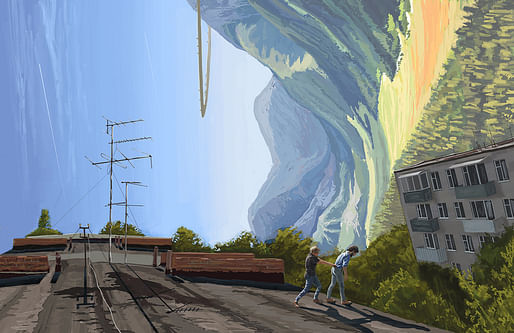
Synopsis: “The entry utilizes classical painting techniques to create monumental landscapes with strange scifi megastructures inserted into them. The relatively mundane occurrences in the story make it feel like these wild scenes could in fact be real.”
From the winner: “Landscapes have always inspired me to put something weird, unreal and out of human scale into them. Something not feasible and not practical that contrasts with the natural surroundings, but also exists at the same scale. These satirical interventions lead to new ideas and feelings about nature - they make the viewer more aware about the environment and our harmful impact on it. We are flat surface creatures. Sometimes I feel that we crave it so much that the planet is going to be turned into pavement so cars can go anywhere, and our industries could continue expanding. The "Saturn Rings" in my proposal represent these flat surface desires but in a more poetic, optimistic, and friendly manner.” — Mykhailo Ponomarenko
2ND PRIZE: “City Walkers” by Terrence Hector | Chicago, IL
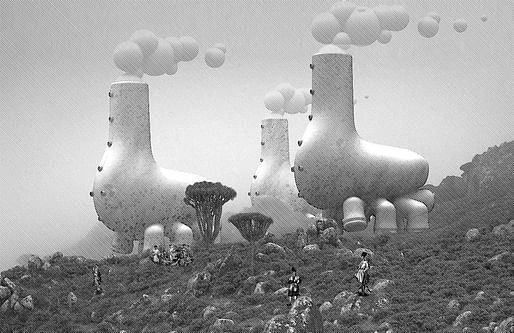

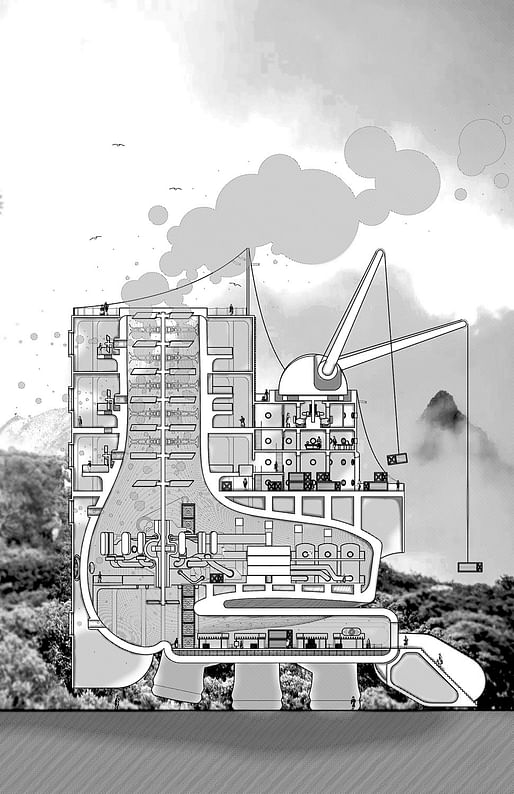
Synopsis: “‘City Walkers’ or ‘The Possibility of a Forgotten Domestication and Biological Industry’ tells a beautiful story of a sentient species of architecture that moves slower than humans can perceive. That doesn’t stop human beings from harnessing every possible bit of energy from “The Walkers” in addition to spawning settlements in their wake.”
From the winner: “The city in this story was an exploration of civilization and urbanism as humanity’s relationship with natural and biological systems that exist on a vastly longer timescale than the human lifespan. Creating a closer relationship time-wise between human and natural timeframes let me derive a new urban typology, which also acts as a parable of overexploitation. I was trying to work through an inferred genealogy from the USS Monitor to Hayao Miyazaki, working through a tradition of humanizing massive, aggressive machines.” - Terrence Hector
3RD PLACE: “Up Above” by Ariane Merle d’Aubigné & Jean Maleyrat | France
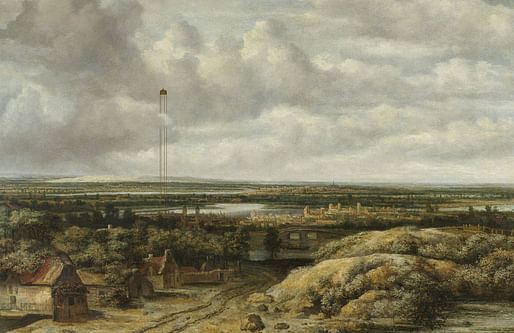
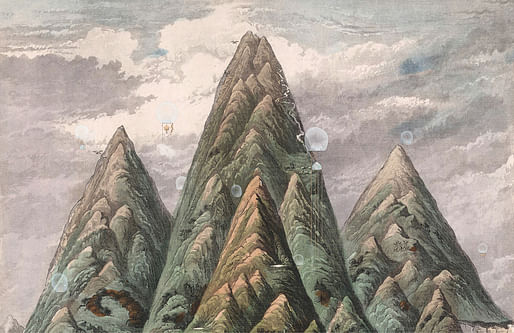
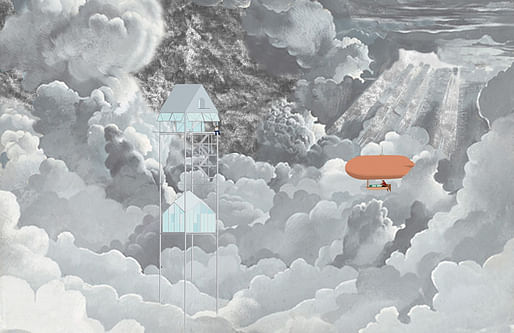
Synopsis: “‘Up Above’ is an imaginative story of refugees in the sky that build shanties on thin stilts, high in the clouds, to escape oppression, regulations, and inequality on the surface of the earth below.”
From the winners: “Revisiting the world of fairy tales by participating in the Blank Space competition was very stimulating. The short narrative takes a look at reality through the marvelous and the fantastic. We have tried to highlight contemporary issues and concerns by letting the supernatural burst into reality. Migration, the accumulation of wealth, overpopulation, the terrorist threat and pollution are some of the issues with which we live every day. We highlighted these concerns and our love of art through this poetic tale. Our generation often aspires to an "elsewhere", in our "elsewhere" the rules of the game have changed.” — Ariane Merle d’Aubigné & Jean Maleyrat
AIAS Winner: “Playing House by Maria Syed & Adriana Davis - New Jersey Institute of Technology
(AIAS Prize is awarded to the highest scoring entry from an AIAS member)
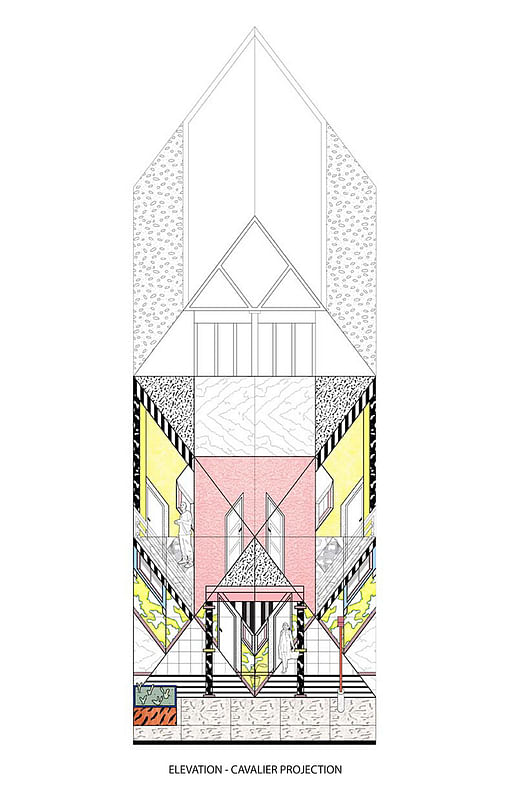
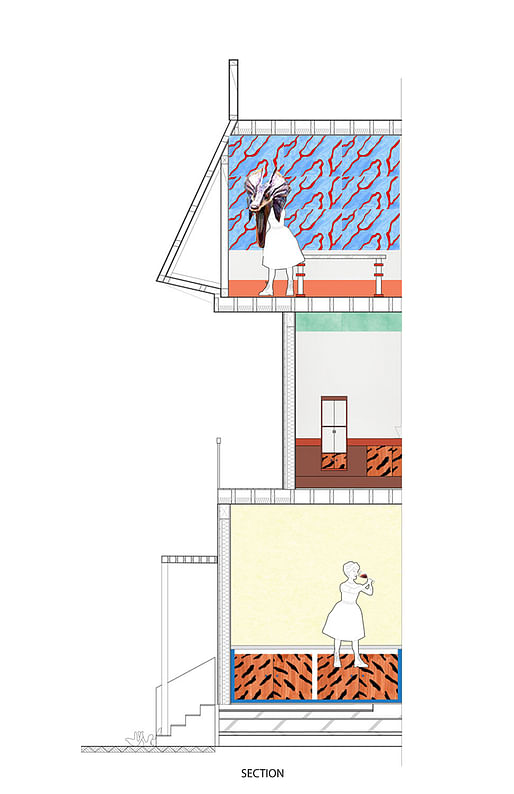
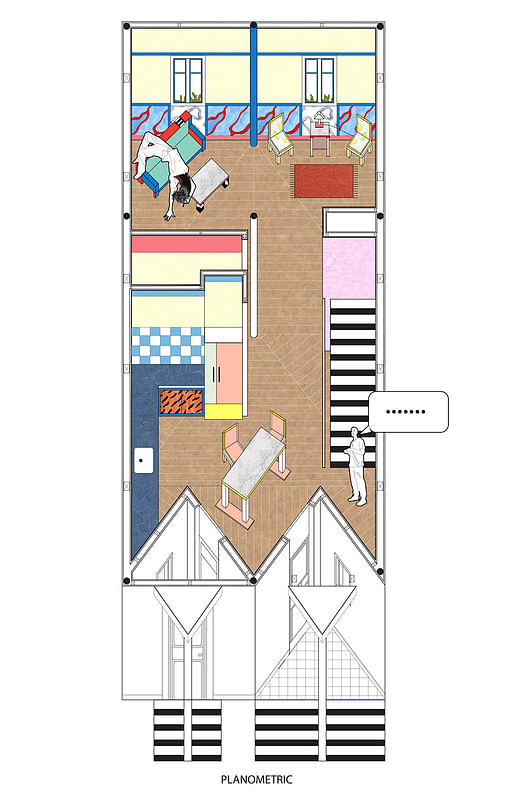
Synopsis: “Playing House is an exercise in illustrating the destructive power of split-personality. Starting with traditional drawings of a modest dwelling, the drawings, and in turn, the narrative, devolve into a series of accusations, misunderstandings, and multiplicity.
From the winners: “Playing House embodies the idea that architecture can eclipse the personality of its occupants, where the character and style of the architecture dictate the mood of the inhabitants. The loud textures and discordant angles of the home sparked the idea for the story: transitioning from room to room manifests itself in drastic physical and psychological change. The drawings, the genesis of our submission, address architectural conventions of projection drawings, merged with the unconventional appearance of the home to create friction. This act is mirrored in the story, where a typical visit from a neighbor turns peculiar. The two creators of this project worked closely throughout their undergraduate career, creating an inseparable partnership for their first collaboration.” — Maria Syed & Adriana Davis
To read the winning entries in full, click here.
Don't forget about the Honorable Mention entries in the gallery below!
1 Comment
This is a shot in the dark. Maybe you can help or steer me to someone who can.
I am looking for and experimental architect interested in pursuing a fantasy design for a concept I have for an Imaginarium in the Hollywood Hills.
This project could lead to a reality show involving both the entertainment industry and the political sphere and how they would intersect if this project was to attempt to become real.
This is long on creativity and short on actuality at this time. I’d like it change that.
Search Hollywood Imaginarium on Facebook.
William
Hollywood BandB
Block this user
Are you sure you want to block this user and hide all related comments throughout the site?
Archinect
This is your first comment on Archinect. Your comment will be visible once approved.